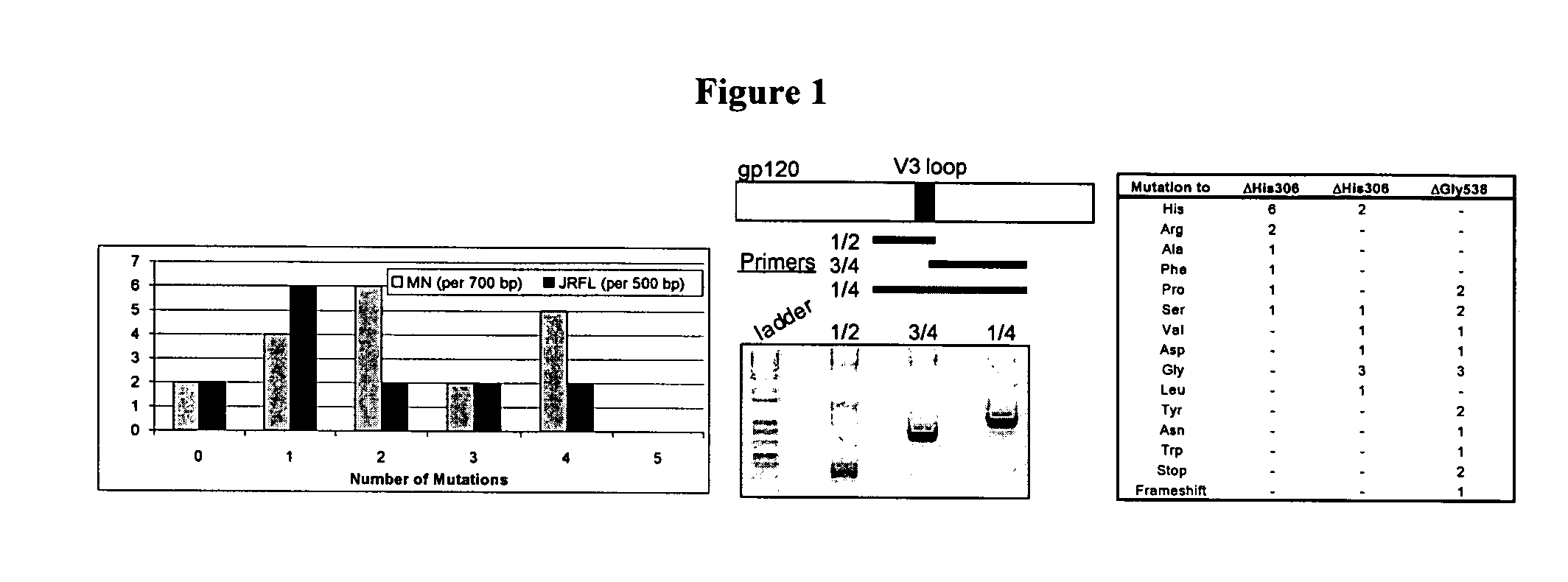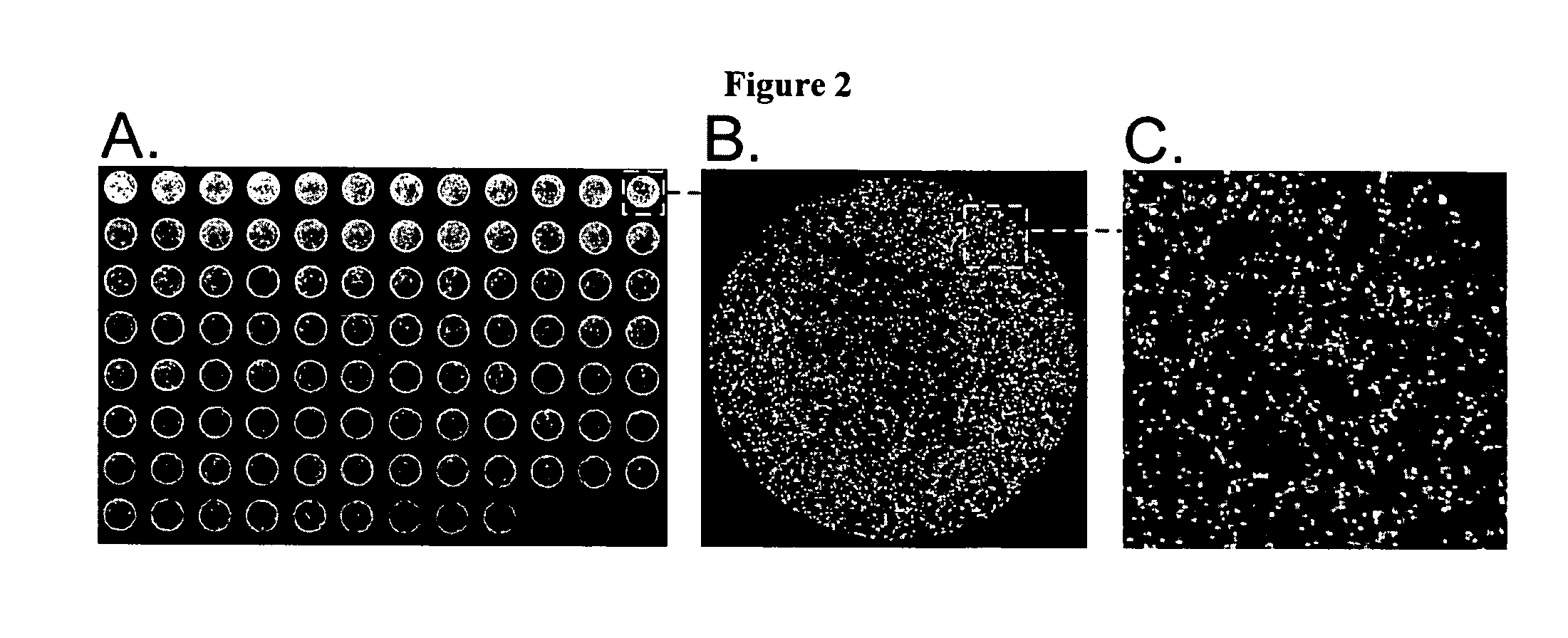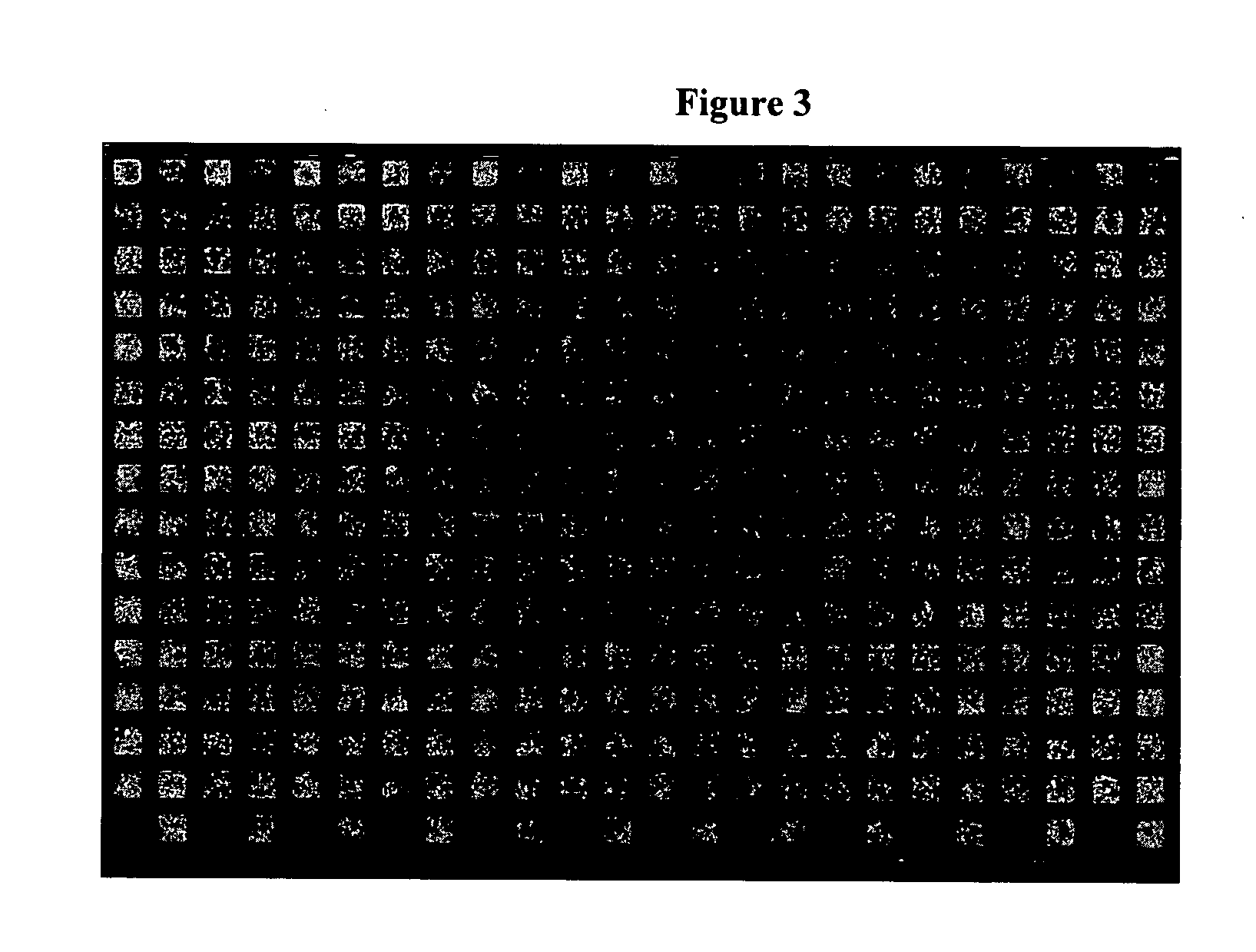Reverse transfection of cell arrays for structural and functional analyses of proteins
a cell array and protein technology, applied in the field of reverse transfection of cell arrays for protein structural and functional analysis, can solve the problems of affecting patient morbidity and mortality, the success of the procedure, and the receptors are among the most difficult to manipulate and apply to conventional therapeutic development programs, and the figure is only expected to grow
- Summary
- Abstract
- Description
- Claims
- Application Information
AI Technical Summary
Benefits of technology
Problems solved by technology
Method used
Image
Examples
example 1
Random mutagenesis of CCR5
[0156] pCAGGS-CCR5 was constructed to contain the full length cDNA for CCR5. The CCR5 insert was constructed to be flanked by two epitope tags that are excluded from the mutagenesis process (using unique restriction sites), but which are expressed with each mutated cDNA: an N-terminal HA tag to normalize cell surface expression, and a C-terminal V5 tag to confirm full-length translation. A unique restriction site was placed in the center of the CCR5 gene (by silent mutation) to allow CCR5 to be mutated approximately 500 bp at a time. By restricting mutation regions to 500 bp, mutations can be identified using a single sequencing reaction. Cellular expression of this construct (CCR5 and both tags) was confirmed by immunofluorescence.
[0157] Clontech's Diversify™ PCR Random Mutagenesis kit was selected. The Diversify™ mutation rate can be adjusted from two to eight mutations per 1,000 bp simply by controlling manganese and dGTP concentrations. CCR5 was mutat...
example 2
Construction of Focused Mutation Arrays
[0159] A library of HIV Env mutations is created to focus on the V3 region of Env, a region that controls HIV tropism and coreceptor specificity. Additional regions of interest, such as the HR1 helix in gp41, could also be targeted. JRFL Env will be used. Random mutagenesis using error-prone PCR is performed (Leung, et al. (1989), Technique, 1:11-15), focusing on the approximately 100 bp region of V3. By mutating this region at a rate of approximately 1.5 bp change per 100 bp, or 1 amino acid change per 33 amino acids, a library of 1,000 clones will contain over 20 amino acid changes per amino acid position (i.e. approximately all possible mutations at each residue). Using this library, a mutation array is used to map coreceptor binding sites for JRFL Env.
example 3
Codon Mutagenesis
[0160] Mutation Arrays containing random variants of a protein can result in the identification of critical amino acid positions involved in drug binding and protein function. However, the precise contribution of amino acid side-chain structures at each position requires further analysis. By mutating specific amino acid positions to every other possible amino acid, the contribution of side-chain structures at specific amino acid positions can be determined. This data can also be used to construct detailed three-dimensional models of interactions and structures.
[0161] The V3 loop of Env is a major immunogen and determinant of tropism (Hwang, et al. (1991), Science, 253:71-74, O'Brien, et al. (1990), Nature, 348:69-73, Schupbach, et al. (1984), Science, 224:503-505). Similarly, the HR1 helical region of gp41 facilitates membrane fusion and is the target for new fusion-inhibitor drugs (Chen, et al. (1995), J. Virol., 69:3771-3777, Kilby, et al. (1998), Nat. Med., 4:1...
PUM
 Login to View More
Login to View More Abstract
Description
Claims
Application Information
 Login to View More
Login to View More - R&D
- Intellectual Property
- Life Sciences
- Materials
- Tech Scout
- Unparalleled Data Quality
- Higher Quality Content
- 60% Fewer Hallucinations
Browse by: Latest US Patents, China's latest patents, Technical Efficacy Thesaurus, Application Domain, Technology Topic, Popular Technical Reports.
© 2025 PatSnap. All rights reserved.Legal|Privacy policy|Modern Slavery Act Transparency Statement|Sitemap|About US| Contact US: help@patsnap.com



